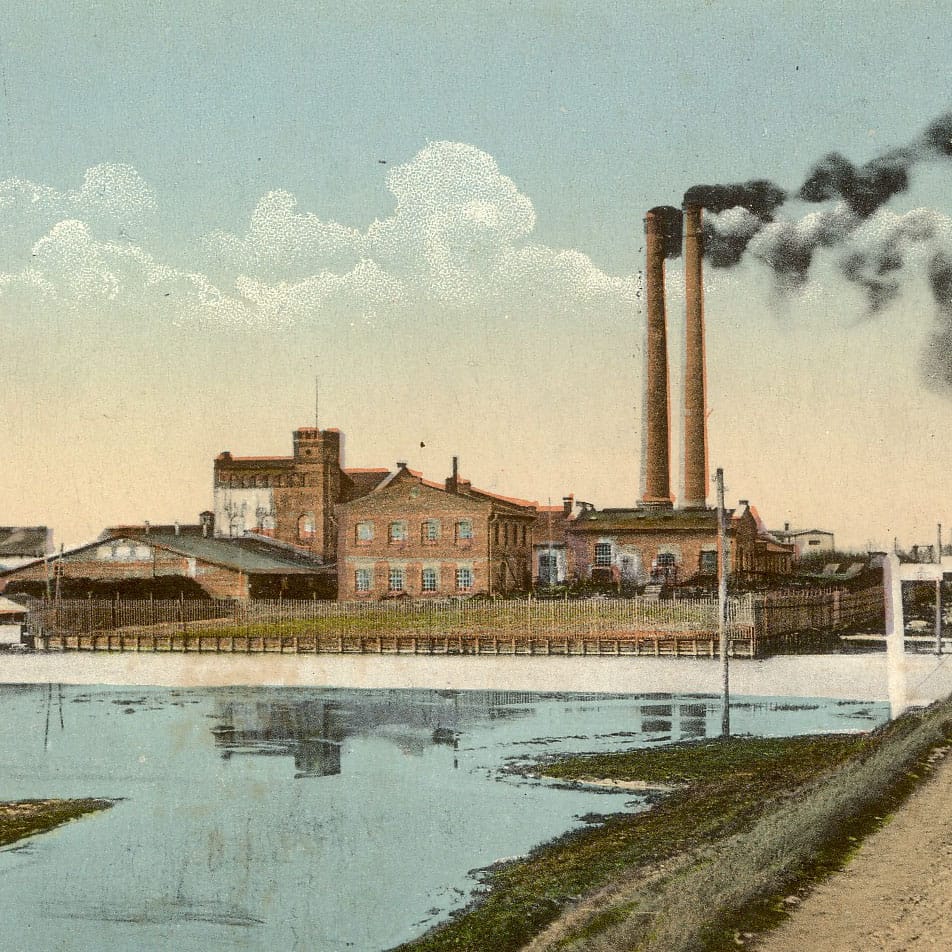ON THE INDUSTRIAL HISTORY OF ESTONIA
After the Russian Czars assimilated Estonia into their empire in 1710, the first manufactories gradually emerged, such as the saw mill in Räpina, glass works at Põltsama and a porcelain manufactory in Tallinn. A tentative industrialisation process took shape starting in the mid-19th century, the most significant milestones being the Kreenholm textile works in Narva in 1857, whose cotton spinning and weaving machinery was driven by the waterfalls of the Narova River. With workers’ housing, schools, etc., the plant gradually developed into a full-fledged industrial settlement, and was for a time among the largest textile manufacturers in the world.
As so often, railway construction provided the impetus for further foundings. A link from Paldiski to Saint Petersburg via Tallinn and Narva opened in 1870. A narrow-gauge railway line from Parnu to Valga went into operation in 1896, and was soon servicing an extensive network. Match and furniture factories opened in Tallinn, and paper and cellulose manufacturing flourished. One of the largest Estonian operations was the Dvigatel rail car factory in Tallinn, which also drew many workers from Russia. Tallinn’s port handled the second-largest volume of cargo in Russia, after Saint Petersburg. Prior to the First World War, it was expanded with shipyards, in particular for the Czarist navy.
During the war, mining of oil shale began in Kohtla-Järve, which ultimately developed into Estonia’s greatest energy resource and a major export item. Oil shale is valuable not only as a fuel, but as a base material for coatings, asphalt and lubricants; additionally, the oil extracted from it is in all ways comparable to conventional petroleum. After reconstruction, the now-independent Republic of Estonia witnessed the founding of further industries on the basis of local raw materials, such as cement plants, wood processing and food production. Chemical plants began producing rubber and artificial fertilizer, and toward the end of the 1930s a promising electrical industry began to emerge with the manufacture of radios and telephones. However, independence ended abruptly in 1939 with the stationing of Soviet troops and the subsequent annexation by the USSR.
In the Second World War, Estonia successively fell under both Soviet and German occupation and suffered extensive destruction. It then became a part of the Soviet Union, whose first act was to exploit Estonian fuel deposits. The oil shale industry resumed production as early as 1946, and gas extracted from oil shale was fed into a pipeline to Saint Petersburg starting in 1948. The Soviet government erected a uranium enrichment facility near the oil shale mines in Sillamäe on the northeast border, transforming the one-time seaside resort into a locked-down centre for military production.
Once the war damage was repaired, the government in Moscow pushed industrialisation, making the country highly dependent on the USSR: aside from oil shale, virtually all raw materials as well as a large portion of the labour force came in from Russia – and most Estonian-made products flowed back to the Soviet Union. Resources were mainly allocated to industries that had developed during the period of independence: in addition to the mining and chemical processing of oil shale, these included mainly paper and furniture manufacturing and the production of foods and textiles. In the 1950s, the government also promoted machinery and metal processing, but classic heavy industries such as coal mining, steel-making and automotive manufacturing were omitted, as the country lacked deposits of iron ore and coal. However, Estonia benefitted from its well-developed transportation infrastructure and a high education level, and in the 1960s the number of industrial workers exceeded all other sectors of the economy – if the sometimes-dubious Soviet statistics are to be believed. In spite of the one-sided concentration on energy production and light industry, Estonia became one of the most highly industrialised and prosperous regions of the Soviet Union – just as it was under the czars.
Estonia was a union republic of the 'Union of Soviet Socialist Republics (USSR)', which was dissoluted in 1991.
Therefore, for completeness, also read our articles on the industrial history of the other former soviet republics
Armenia
Azerbaijan
Belarus
Georgia
Kazakhstan
Latvia
Lithuania
Moldova
Russia
Ukraine


